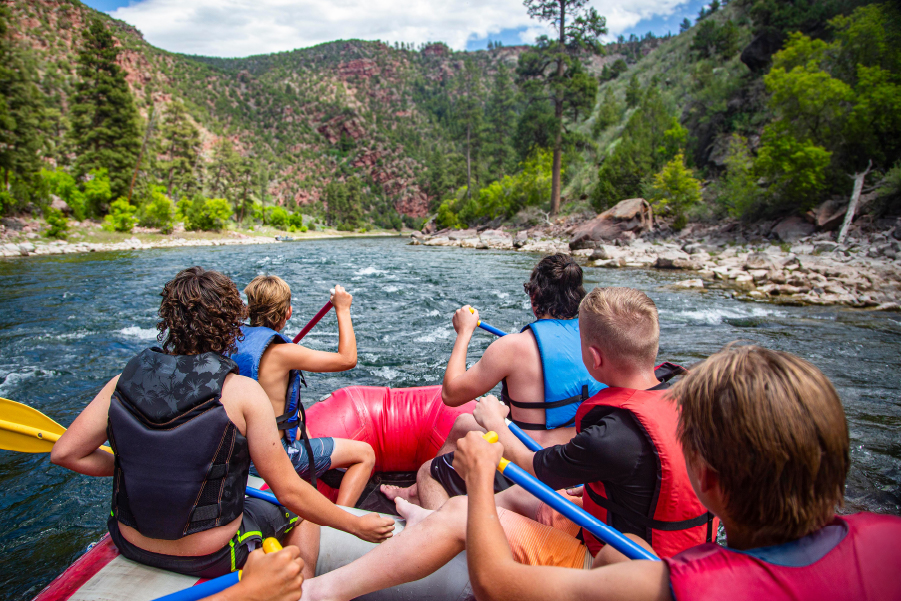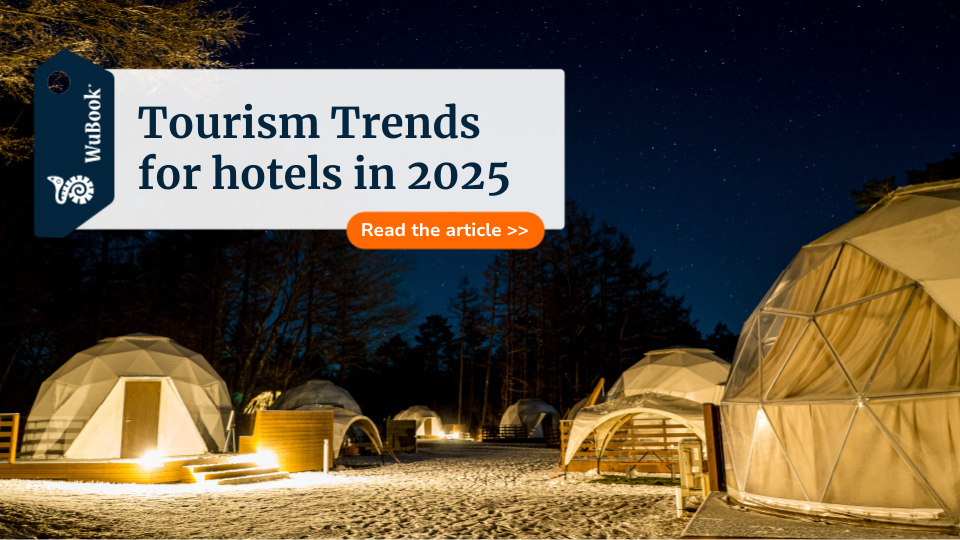Dear WuBookers, the tourism industry is in constant turmoil and is changing – in demand and supply – as global tastes and needs change. To well-established phenomena, such as food and wine tourism, new ones are being added all the time: it is difficult to predict how long they will last, but knowing about them and trying to go along with them can foster visibility and profit. Here are the trends that will redefine the travel industry in 2025.
Year-end and future forecasts, in numbers
BIT, the Italian trade fair dedicated to tourism, takes care of it to sum up how 2024 ended and what to expect, in numbers, for the years to come. According to the Observatory (which draws on data from Deloitte and Oxford Economics), last year’s world tourism recorded a further increase over 2023, thus moving even closer to pre-pandemic levels.
21%of the world’s population travels but even this percentage is set to rise to 24% in 2030 and 33% by 2040.
In terms of country of origin, the main markets are China, Germany, the UK and the USA, but others are starting to emerge such as Saudi Arabia, Brazil, Indonesia, Mexico and Pakistan.
In terms of the main travel destinations, however, Spain, France and the U.S. remain in the lead, followed by Italy. An interesting finding, however, concerns the distribution, with global tourism being concentrated less in these destinations than in the past. A sign that something is changing in the preferences of travelers, who are looking for diversification and new stimuli.

7 tourism trends of 2025 to be aware of
The trends born in 2024 such as “coolcation” (vacations in cool places) and the search for wellness, comfort and personalization are confirmed for 2025 as well.
Added to these are driving factors such as nostalgia, the desire for adventure, and curiosity about unusual places and local traditions. Here are 7 trends predicted for 2025 according to the forecasts of some of the leading industry players.
- Noctourism: travel to discover the night
“Noctourism” (an abbreviation of “nocturnal tourism”) denotes the trend of organizing trips focused on night activities such as stargazing, torch-lit trips, and sunrise tours. A way of traveling that not only makes the stay more suggestive, but also meets practical needs related to overcrowding and climate change.
Many tourists in fact look for cool and less popular places, to avoid excessive heat and crowds.
Visits to museums that are open until late or all night, night markets, and nature trails after dark are popular with those seeking this type of solution.
- Secondary destinations: Asia is attracting more and more
The desire to travel to more remote and unknown destinations, combined with simplified entry procedures, make Asia one of the most attractive destinations for travelers.
China, Thailand, Japan and India are considered among the most attractive countries because of their millennia-old culture and the luxury service offered by premium facilities.
Also not to be forgotten is the fascination for these places exerted by TV series such as Squid Game and White Lotus, which are famous on a global scale.
- Adventure comes with traveling: bravecations
They are called “bravecation” and are adventure vacations, from the words “brave” and “vacation.” An adventure of all kinds and without age limits.
Whether it is tasting a very strange typical dish or trying their hand at extreme sports activities, travelers confess to feeling bolder on vacation and more inclined to step out of their comfort zone.
A craving for novelty and adrenaline that can be exploited in many ways: from special menus to organized tours.

- A look back: nostalgia as a travel motivator
Rediscovering childhood places, repeating trips made with the family, re-experiencing old memories: nostalgia for happy moments drives another segment of travelers, especially Millennials and Gen Z.
What attracts this audience? Typical places that have remained unchanged over time, or that have been reconstructed to bring back childhood memories and retro atmospheres, whether real or dreamed. Locations that evoke ways of living from the recent past or real replicas of experiences already lived, such as a sabbatical year or a honeymoon.
- Rest as focus of the vacation
Once again this year, sleep tourism remains trendy. Quality sleep is indeed at the center of the desires of travelers who are looking for totally relaxing vacations with dedicated programs.
Among the year’s trends, there’s the so-called “hurkle-durkling,” a Scottish word we can translate as “lounging.” Lingering under the covers more than usual and lazing in bed are the new desires, which are reconciled with an idea of slow and relaxed tourism.
How to meet these demands? For example, by offering massages, meditation and, of course, a full pillow menu!
- In search of wellness (and longevity)
Speaking of wellness, the most attentive tourists care about their physical and mental health and, for this reason, prefer facilities that can offer both. Yoga, healthy eating, cryotherapy sessions and beauty treatments are a must even on vacation and become a decisive factor in choosing a place to stay.
Wellness boutiques and extra luxury hotels can aim to win over this type of guest too.
- Hotels as destinations in their own regard
Boutique hotels and, in general, establishments that offer a personalized and authentic experience are also at the top of the list of preferences for 2025.
What makes them so beloved? Originality, high-end services, and a strong connection to local culture and traditions.
Characteristics that cause more and more travelers (business or leisure) to be attracted to these solutions to the point that the hotels themselves become reasons to travel.
Transversal to all of these behavioral trends is the use of artificial intelligence widespread among both travelers (who increasingly rely on technology to plan and manage reservations) and those in the industry to lighten the work of the front desk or make service even more efficient.
These are macroscopic phenomena from which every facility can draw to adapt or revise its offerings to a greater or lesser extent: much depends, in fact, on the context in which one fits in and the identity one has or wants to give to one’s reality. Taking them into account, however, can help you predict market trends and turn them to your advantage.

